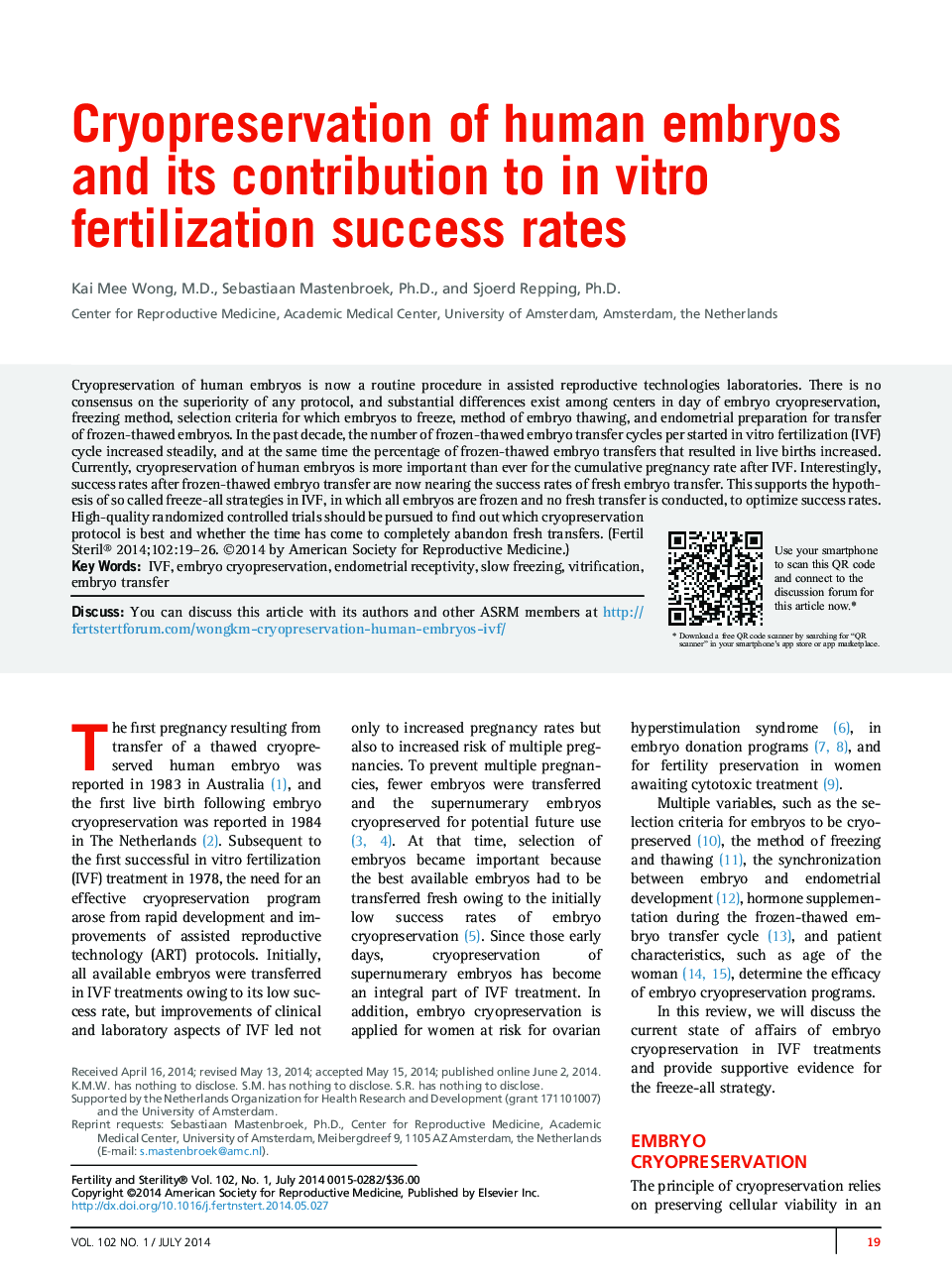| Article ID | Journal | Published Year | Pages | File Type |
|---|---|---|---|---|
| 6180127 | Fertility and Sterility | 2014 | 8 Pages |
Cryopreservation of human embryos is now a routine procedure in assisted reproductive technologies laboratories. There is no consensus on the superiority of any protocol, and substantial differences exist among centers in day of embryo cryopreservation, freezing method, selection criteria for which embryos to freeze, method of embryo thawing, and endometrial preparation for transfer of frozen-thawed embryos. In the past decade, the number of frozen-thawed embryo transfer cycles per started in vitro fertilization (IVF) cycle increased steadily, and at the same time the percentage of frozen-thawed embryo transfers that resulted in live births increased. Currently, cryopreservation of human embryos is more important than ever for the cumulative pregnancy rate after IVF. Interestingly, success rates after frozen-thawed embryo transfer are now nearing the success rates of fresh embryo transfer. This supports the hypothesis of so called freeze-all strategies in IVF, in which all embryos are frozen and no fresh transfer is conducted, to optimize success rates. High-quality randomized controlled trials should be pursued to find out which cryopreservation protocol is best and whether the time has come to completely abandon fresh transfers.
